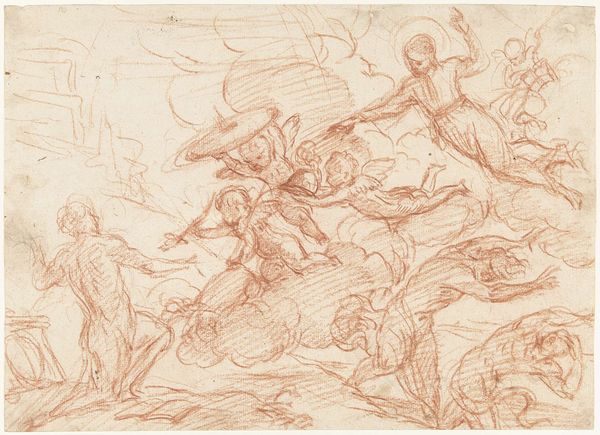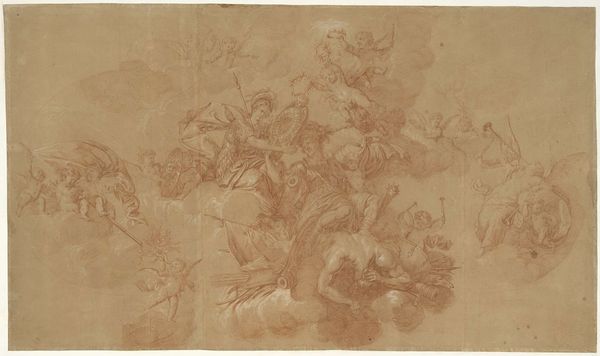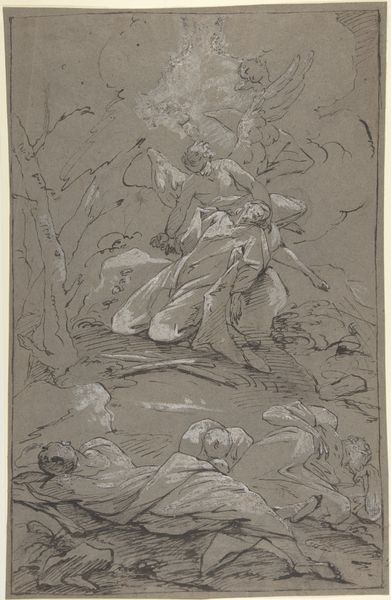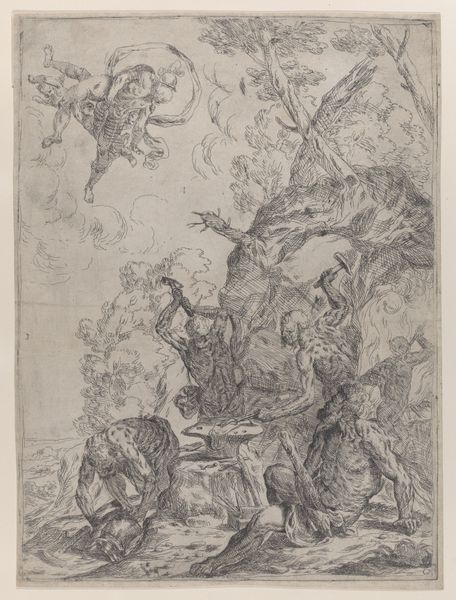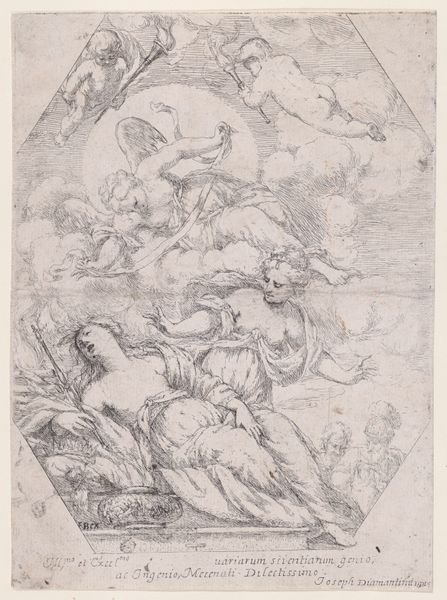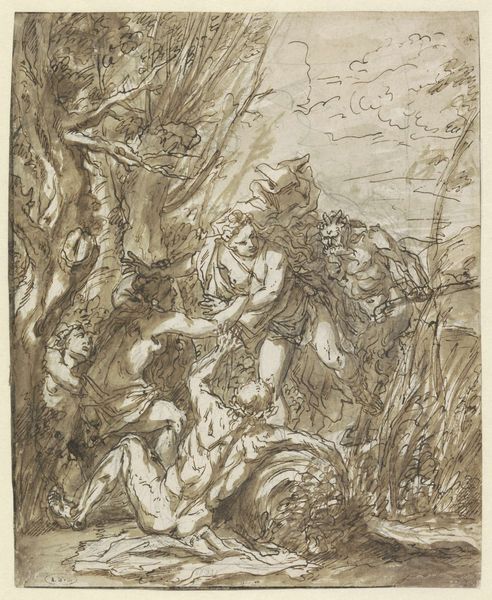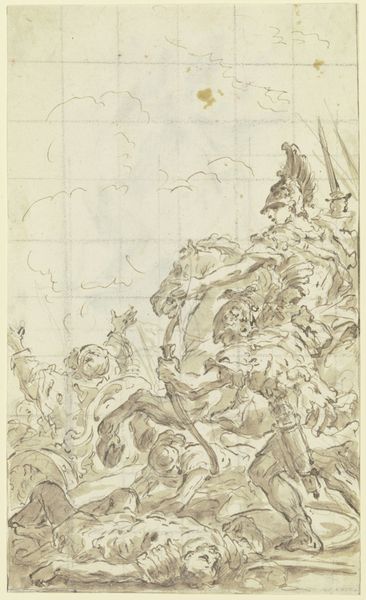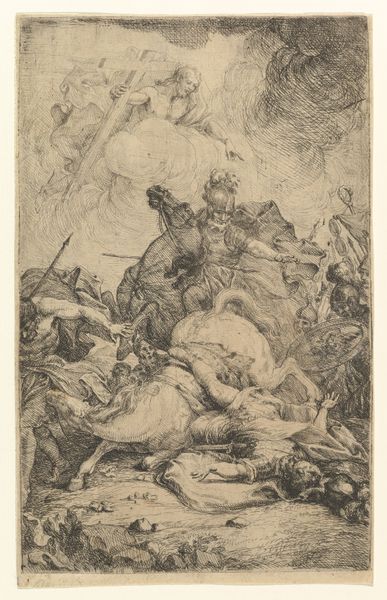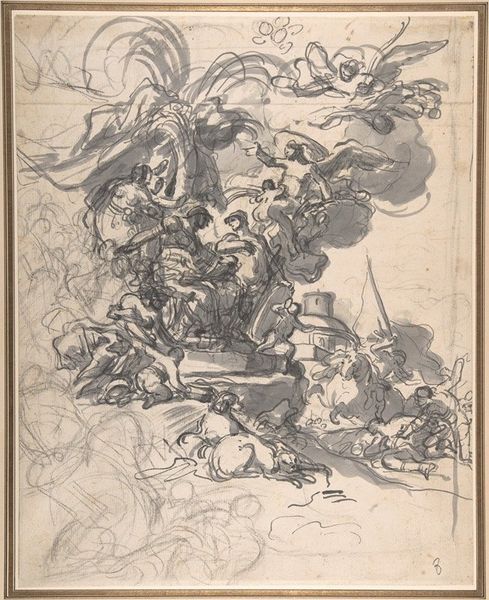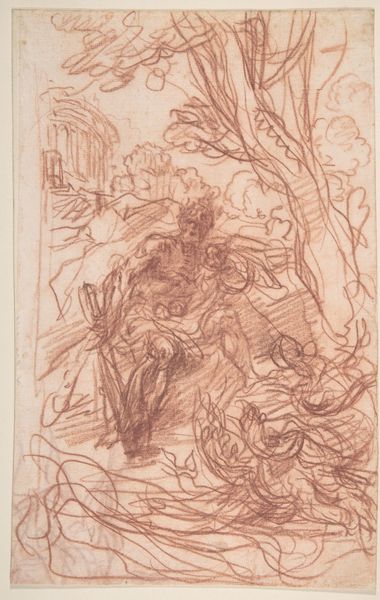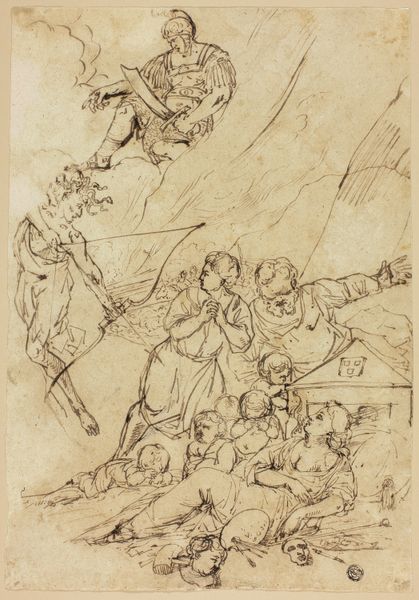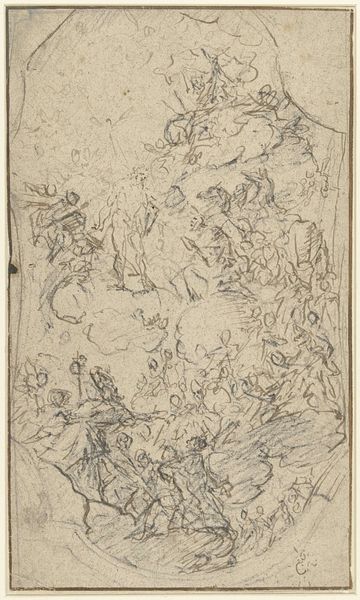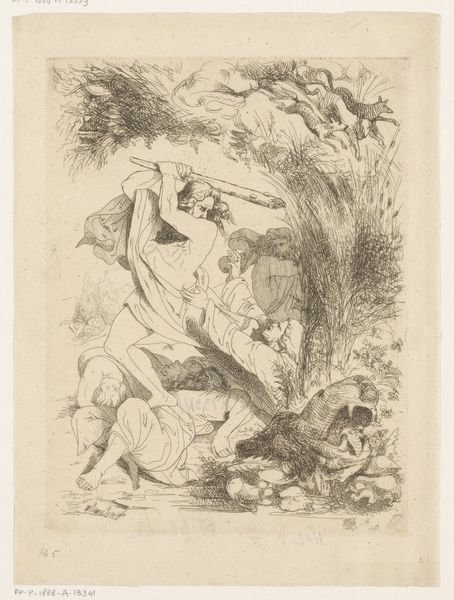
Dimensions: height 513 mm, width 354 mm
Copyright: Rijks Museum: Open Domain
Curator: Marco Marcola’s pen and ink drawing, made circa 1750 to 1793, presents “The Martyrdom of Saint Peter Martyr.” Its composition strikes me as dynamically unbalanced. What’s your initial read? Editor: Agitation, certainly. My eye is immediately drawn to the flurry of figures and their desperate gestures. There’s a visceral drama being depicted here; a kind of rupture in the earthly realm underscored by the descending angel at the top. The symbolic weight of martyrdom looms large. Curator: The application of line here is noteworthy. See how Marcola uses hatching to suggest volume and shadow, building form meticulously? The composition is Baroque in its drama, with that pronounced diagonal thrust directing our gaze upward towards the descending angel. Editor: Yes, and that angel is key to unlocking the full iconography. Saint Peter Martyr, also known as Saint Peter of Verona, was a Dominican preacher murdered for his faith. The angel is a classic visual shorthand indicating divine intervention, yet also suggests his soul ascending. The martyr's palm reinforces his sacrifice. Curator: Consider the deliberate juxtaposition of the serene angel against the earthly brutality. Note the almost academic rendering of the figures, particularly the musculature of the executioner and the contorted posture of the Saint. It shows an engagement with artistic conventions of the time. Editor: Absolutely. Marcola masterfully contrasts spiritual hope and worldly violence using established Christian symbols. It reminds us of the Church's frequent artistic focus: translating stories of persecution into emblems of triumph and endurance, shaping collective memory around these archetypes. Curator: I agree, there is an intellectual exercise, an exercise in form here too. But the way the shapes all pull and push feels as if meaning might be more, well…unstable. There is so much violence contained within a well-rendered composition. Editor: Perhaps the true brilliance lies precisely there, at the intersection of controlled form and chaotic emotion. Marcola transforms individual suffering into a visual parable about faith’s power, employing potent and very established visual metaphors. Curator: A fascinating exploration. This study provides valuable insight into Marcola’s creative process and his understanding of form, which, in turn, enhances my perception of his intentions. Editor: Indeed, and my recognition of its loaded iconography will allow for a greater, perhaps, empathetic resonance with the long-held narratives the piece activates. Thank you.
Comments
No comments
Be the first to comment and join the conversation on the ultimate creative platform.
